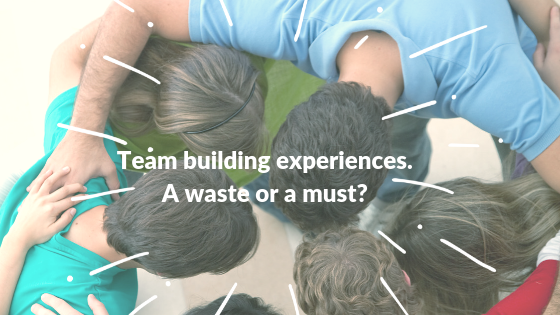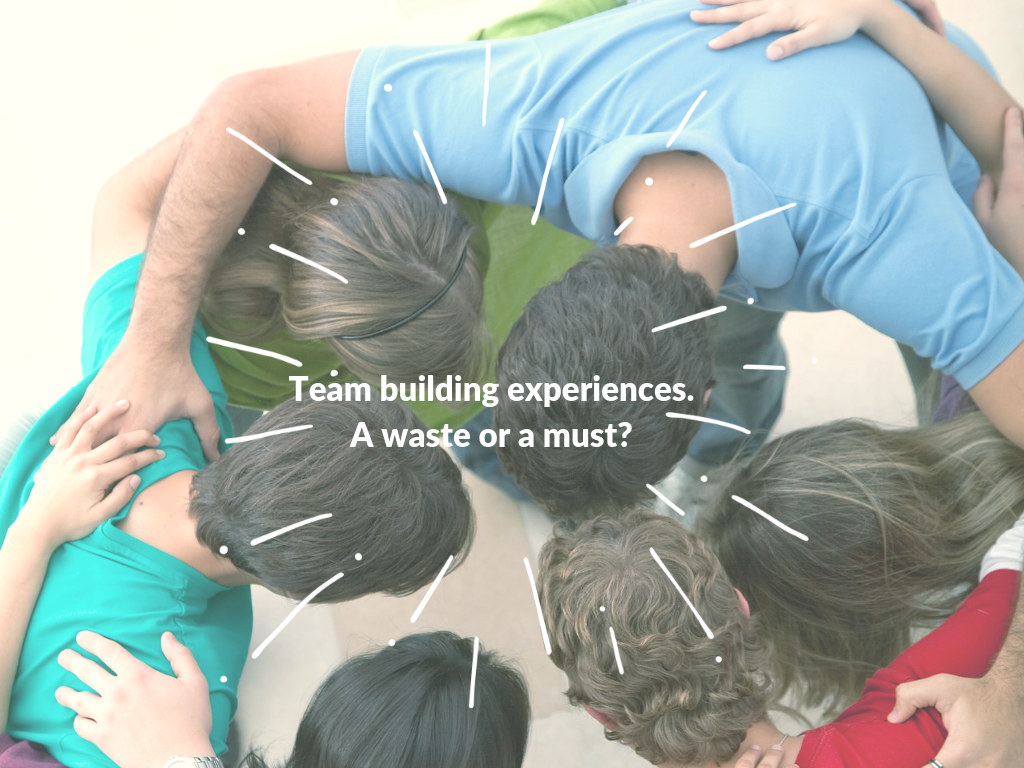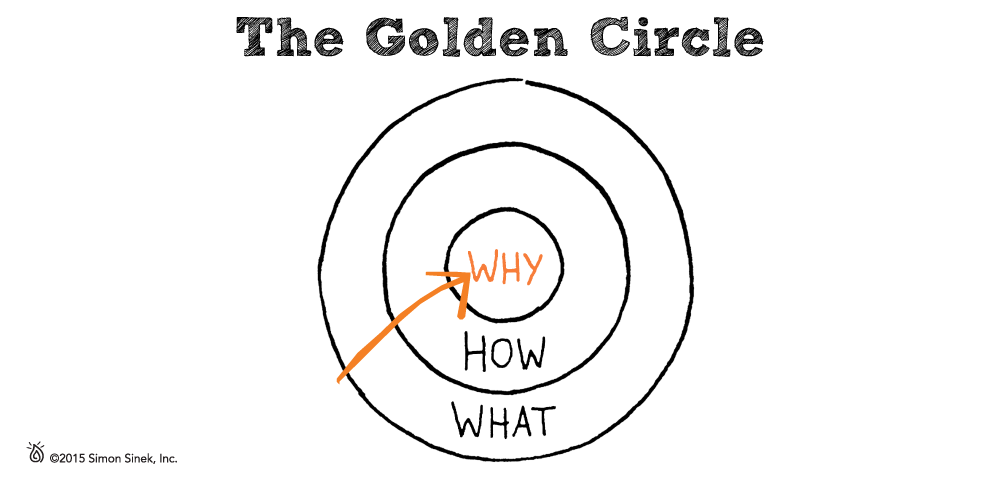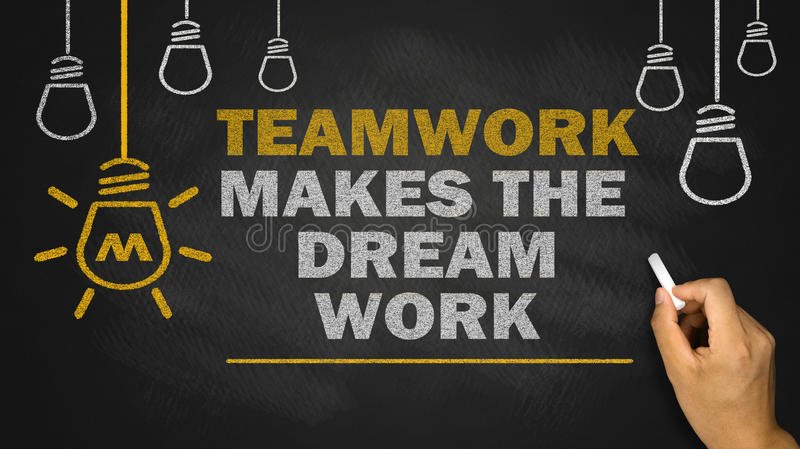
Team building experiences. A waste or a must?
It’s an undeniable truth that today’s employees hunger for more than just a salary. They are concerned about work-life balance, flexibility, and most of all they long for a sense of purpose and connection.
Nonetheless, when it comes to employee engagement, team building is one of the most underrated and least understood aspects.

Recently, we came across the Harvard Business Review article titled Stop Wasting Money on Team Building raising a few points that we felt compelled to address here.
Why is team building so undervalued? Every day we come across more and more articles enhancing the value of experiences as opposed to possession. In the Forbes article “Why you should spend your money on experiences and not things”, Gilovich and other researchers have found that experiences are what ultimately gives you long-lasting happiness and memories. Why? In their own words:
Experiences become a part of our identity. We are not our possessions, but we are the accumulation of everything we’ve seen, the things we’ve done, and the places we’ve been. Buying an Apple Watch isn’t going to change who you are; taking a break from work to hike the Appalachian Trail from start to finish most certainly will.
That’s precisely the vision we want to share about team building – that it can be a valuable experience. That it’s a crucial key to creating engaged workplaces and evolving company culture.
What can hinder this view, this idea?
Inadequate Choice of Activities
“Events like these may get people to feel closer for a little while; shared emotions can bond people. Those bonds, though, do not hold up under the day-to-day pressures of an organization focused on delivering results.”
It’s indeed a common belief that team-building events are only effective for a short-term period. Choosing the wrong team-building activities can have catastrophic effects. It can make people uncomfortable, triggered even, and have the exact opposite effect of what you intended. One of our readers recently shared an example of a very active and fit manager taking her team on a canoeing trip. He, himself, was very excited about it. But what he didn’t understand was that 3 of his 12 team members were not only bad swimmers, but they were also afraid of water. As a result, one person didn’t participate in the activity and just waited on the shore and two had the most stressful 2 hours of their lives. Instead of fun activities, it turns out to be traumatic for others.
Nonetheless, tackling this aspect is relatively simple: find a way to really understand your team needs and preferences. At WeWent, we call them team health checks and it’s an integral part of our methodology to gain insights on what best activities to recommend whether it is a classic game or simple game. Conduct a health check on your team- listen to them, gather their inputs and understand their needs. You can do it through surveys, focus groups, even just by asking them directly.
Start with why
Several aspects should be taken into consideration when choosing a team event.
The most important, is, that when choosing a team physical activity or not, put it into context. Know exactly what your goal is and what you want to achieve with this team building games.
As Simon Sinek would say: start with Why. Why do you need a team event? Give it a purpose.

Here is what Gallup has to say about it:
“Leaders often make a mistake in their approach to engagement. Building engagement is not a separate activity from the actual work that needs to be done.”
Team engagement cannot be just done as a one-off and it cannot be just related to what the manager might think is needed. It is key to put an activity into the broader business context. And very important to encourage everyone in the team to have a say and own this space.
In reality, whenever we think of the future of work, we quickly realize that it’s increasingly complex and team centred. In their 2018 Human Capital Trends Report Deloitte call this phenomenon the symphonic C-suite. New demands of the business world (more competitive, digitally disruptive, agile, more team-centric), are forcing the C-suite professionals to accompany this change. They too now have to work as a team.
The dreaded scenarios of team building, and how to avoid them
We have seen numerous scenarios happening here. Let us share a few…
Let’s take the first scenario.
An international team gets together in one location, it’s a rare opportunity to meet in person and spend some time with each other, away from the office pressures. They might be spending a full day on a business agenda and still want to use the time in the afternoon together.
Our approach when talking to clients is always one to help them find their purpose, their reason. We asked them what their current focus is, what’s their business agenda, what did they do during the day that can be brought to the team building activity in the afternoon.
A common mistake is to do a team building just for the sake of doing something. If you go deeper and reflect on the goals you want to achieve, and how you can make the best of your valuable time together, we can assure it will not be a waste of money nor time.
But we also often encounter the second scenario. The company has a budget and does a team-building activity every year but they struggle to find something unique and meaningful.
To this we stand firm in our belief: invest regularly in your teams; treat them as a real investment and ask what is needed. Reflect on what could have the biggest impact on the performance of the team and as a result, the business.
Earlier this year we experienced that with one of the biggest clients of ours, who used LEGO Serious Play methodology to discuss their annual plan and the ways they can contribute to it together.
Use team-building to reward your teams
Simply put, let’s be honest – having fun together, celebrating, taking a moment to just stop, is a solid objective on its own. And if you choose an activity that is solely focused on that – make sure you articulate it. The event can very well be a “Thank you for a job well done” from the manager to its team.

As Kim Scott says in “Radical Candor”: “Spending time with people from work in a more relaxed setting, without the pressure of work deadlines , can be a good way to build relationships”.
But she also warns to remember that we mostly get to know the people we work with on the job, every day, and it’s important to build these relationships every day, not just at an annual party.
The common goal vs individual motivation
“(…) quality collaboration does not begin with relationships and trust; it starts with a focus on individual motivation.” HBR Article
Individual motivation is important. However, to effectively work as a team, we need to find a way to combine all the individual motivations into a global one, a common goal. And that can only be achieved by building trust, and a psychologically safe environment to share ideas and opinions. That’s how company culture and teamwork thrive – through a deep sense of belonging.
The employee needs to find its purpose both individually and as a team.
In a nutshell…
If you want to make sure your team-building activity is not a waste of money and is truly productive and effective, just make sure you set a goal, a purpose, that you gather feedback and most importantly- that you enjoy it.
Make it an experience. Because experiences build memories, memories lead to feelings. Feelings lead to belonging, translating into the healthy and collaborative company culture.
And you already know our mantra well: a happy team is a productive team!
We would very much appreciate your comments feedback, please leave a comment below.
And if you need some help in choosing the right activity for your next team gathering, would like to discover our team health check – let us know: wecare@experts.shakeuptheworkplace.com.




